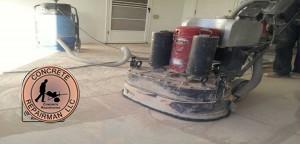Foundation Repair Concrete Repairman® We Fix It Right™
Licensed, Bonded and Insured Commercial & Residential Foundation Repair Contractors - ROC# 300512 CR-9
Foundation Repair Concrete Repairman® We Fix It Right™
Licensed, Bonded and Insured Commercial & Residential Foundation Repair Contractors - ROC# 300512 CR-9
 Concrete Repairman in Arizona can repair and patch any crack or fracture you have in your concrete floor while making sure the finished product is level smooth and ready for finishing. If you are planning on putting down new flooring such as tile, fixing and patching cracks in your floor is an important. Call us today and speak with an expert – (602)418-2970
Concrete Repairman in Arizona can repair and patch any crack or fracture you have in your concrete floor while making sure the finished product is level smooth and ready for finishing. If you are planning on putting down new flooring such as tile, fixing and patching cracks in your floor is an important. Call us today and speak with an expert – (602)418-2970
For both structural concrete and concrete for flooring, the age of the concrete, including cure time and the time between cure and coating, also affects surface condition. The likelihood of additional moisture and chemical contamination of the concrete increases with age.
It is generally accepted that concrete should be allowed to cure a minimum of 28 days before any coating materials are applied to it, with the exception of cementitious coatings that water cure together with the concrete. This cure duration is based on the time it normally takes for the concrete to achieve sufficient physical strength to allow various trades to perform their work without damaging the concrete. Although it is a civil/structural requirement, the 28-day cure period has been generally accepted as a limiting factor for the coating of concrete as well. Even after the 28-day waiting period, moisture may still be present in the concrete. All initial water in the concrete mix may not have fully reacted, or the concrete may have absorbed additional water from rain or other sources. This water can migrate to the surface and affect the adhesion of coatings.
Electronic instruments are available to check the moisture content of concrete; however, the method most often used in coatings work is to place a one-foot square piece of visqueen or polyethylene plastic sheeting on the concrete and seal it around the edges with masking or duct tape. Any water evaporating from the concrete will condense on the back side of the sheet and will be clearly visible when the sheet is removed 24 hours later.
The longer concrete remains before coating, the greater the possibility of contamination by grease or oil. Grease and similar products usually remain on the surface and can be removed with minimum difficulty; however, oil may penetrate the concrete to a point where surface cleaning agents are ineffective. Where this is the case, the oil may have to be boiled out by steam cleaning or the contaminated areas may have to be chipped out to the depth of the oil penetration and the area repaired.
Cement spatter is another problem that can increase with time. With other areas being poured, fresh concrete may slop onto the previously poured concrete and harden into rough, irregular masses that must be removed before coating.
Foreign objects can often slip into the form prior to pouring and may not become evident until after the forms are stripped. If fully embedded, the foreign object does not create a coating problem. But a piece of rope on the surface disappearing into the concrete is a problem. It must be removed, usually by chipping, and the concrete must be restored. Wood blocks, hard hats, small animals, electric cords, light bulbs, and tools are often discovered in newly poured concrete after the forms have been stripped.
Efflorescence is more likely to be found on concrete that has been in place for a while. Concrete contains water-soluble salts. As water from the interior of the concrete migrates to the surface and evaporates, salts are deposited on the surface. Efflorescence can occur with concrete, brick, or concrete block construction. The best way to prevent its recurrence is with adequate waterproofing.
Walls or other structures made from concrete block require only minimal aging prior to coating because the block has been steam-cured when manufactured, and only the mortar requires curing. Other examples of concrete cured during manufacture include most precast concrete items and concrete pipe. The most important requirement when coating the concrete block is that it be clean and dry. Precast concrete may require patching and roughening.
It can be seen from the preceding discussion that concrete presents a much more varied surface than carbon steel when surface preparation for coating has to be considered. Both the physical and chemical characteristics of the concrete must be considered. Both chemical and mechanical means of surface preparation may be required. The following discussion will cover some typical concrete surface conditions encountered as well as the most effective methods of preparing those surfaces.